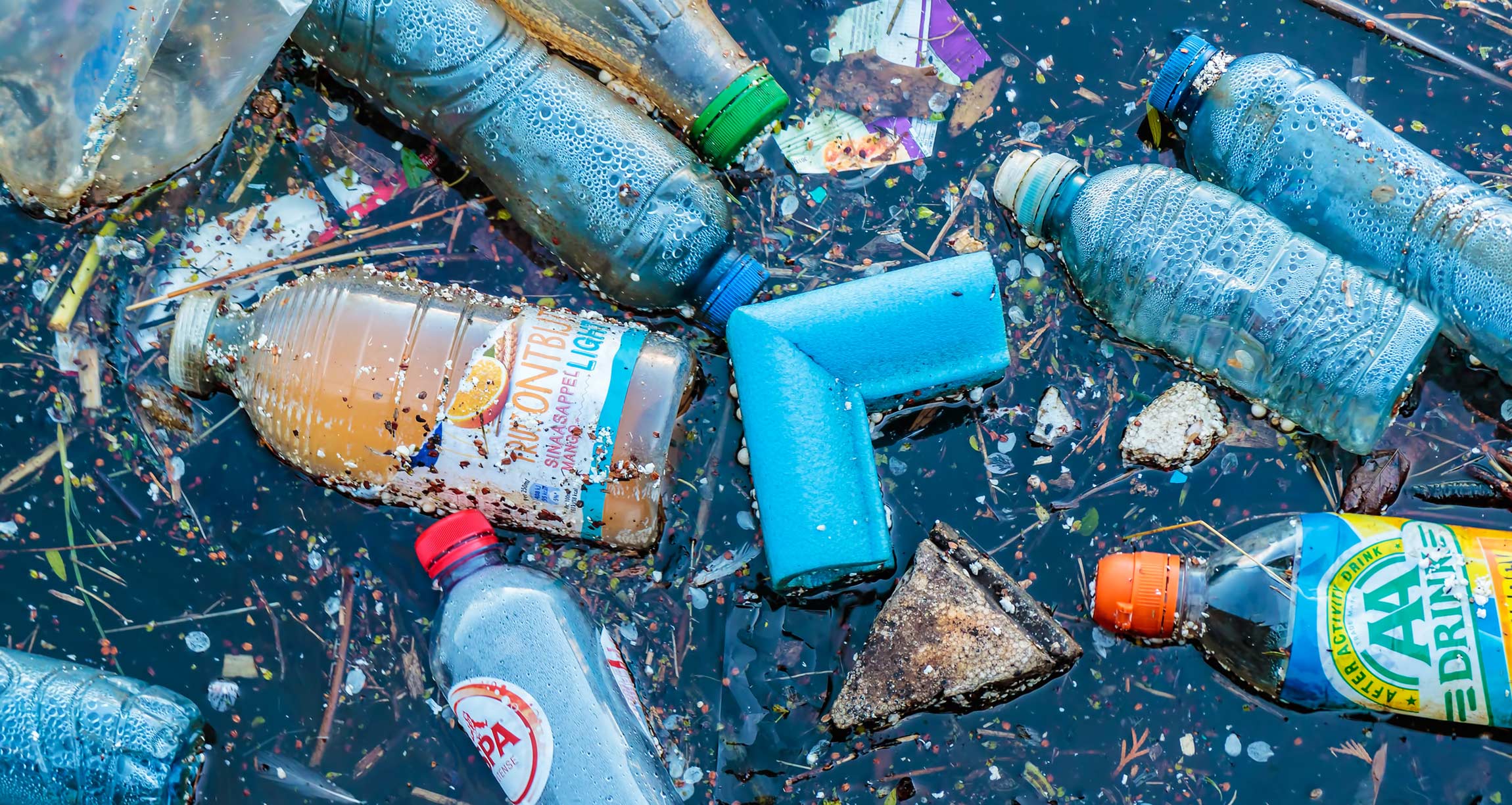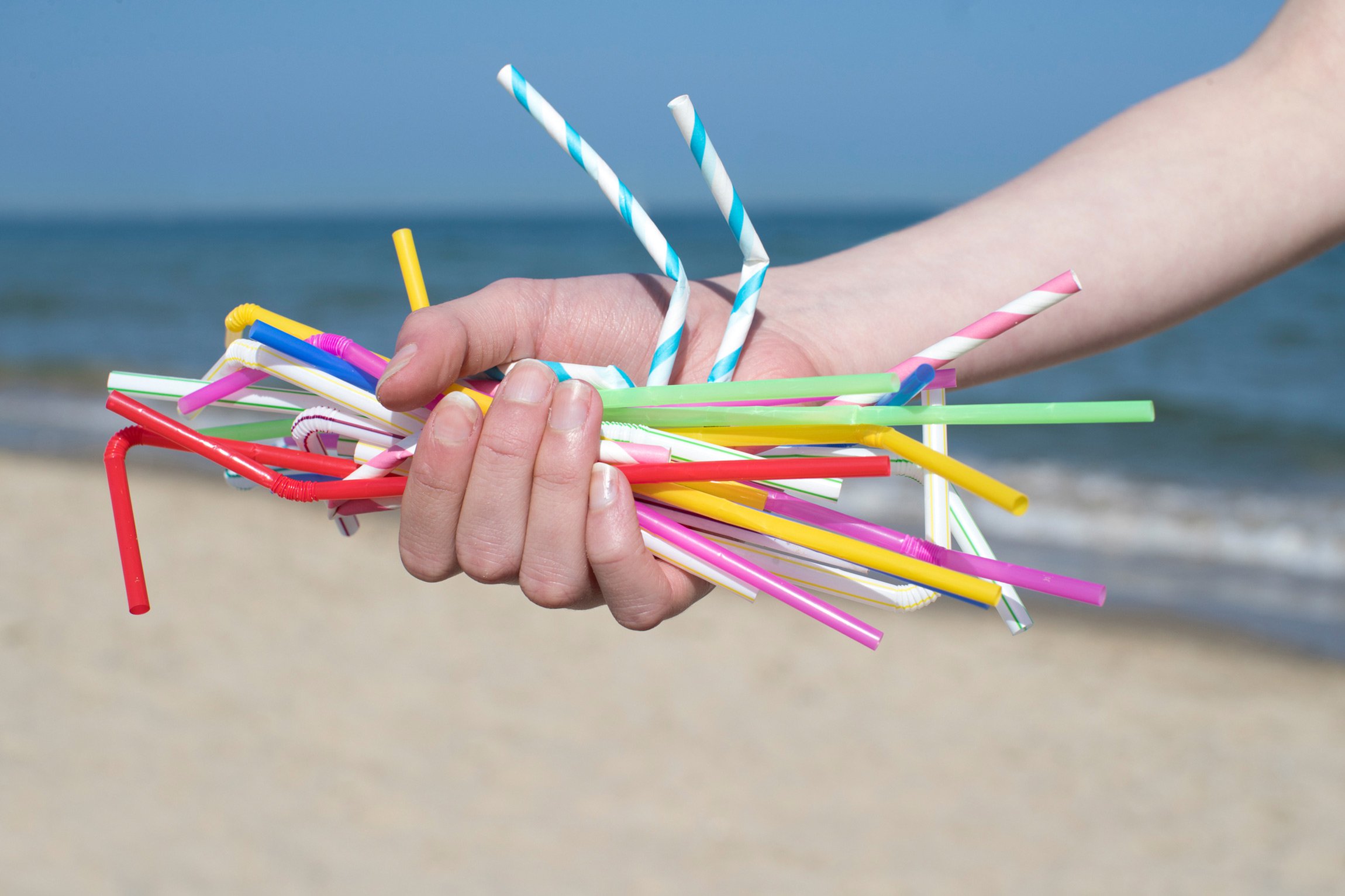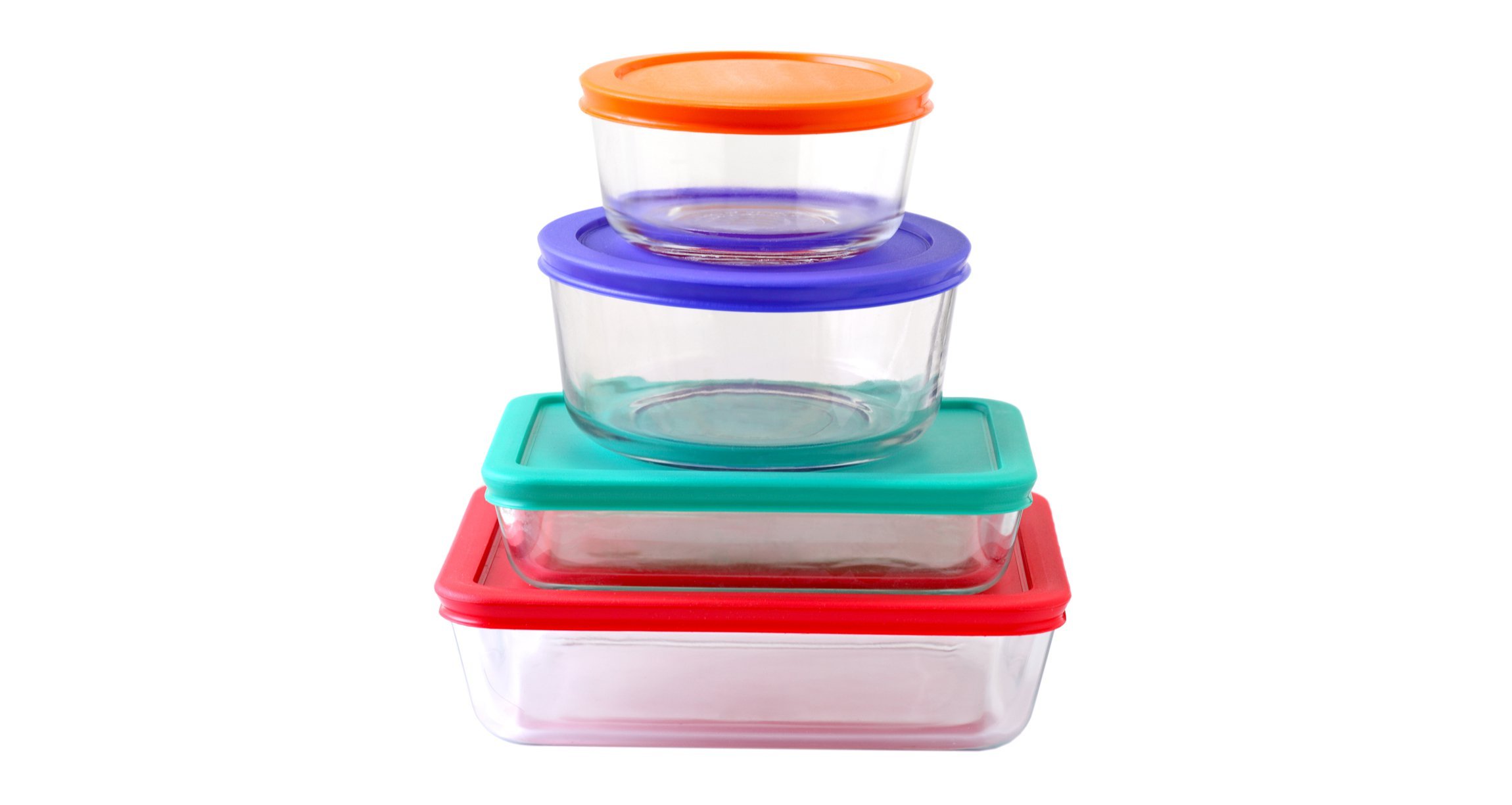Can Drinking Out of Stainless Steel Make You Sick?
52,752 Readers
Why Information technology'southward Fourth dimension to Move Beyond Plastic — And 9 Ways You Can Help

Information technology seems like plastic is almost everywhere. But information technology turns out to exist hazardous to your health and your planet. Go the facts, and find out how you can take action to solve the plastic problem and cutting back on your employ of single-use plastics.
From bags to food containers to car parts, plastic is a significant role of our day-to-day lives. Global production of plastic has been nearly doubling every decade. But experts are becoming increasingly concerned about the impact of plastic on the environment — and on man health.
How harmful is plastic? And what about plastic bans? Do they work? Or are there better means to tackle plastic pollution?
And what tin you do every bit an individual to protect yourself from harm and to help solve the plastic problem?
What Is Plastic?
At that place are seven main types of plastic, each used for different purposes. They're labeled with numbered codes, helping yous determine which kind of plastic you're dealing with and if yous can recycle it.
Though the start plastics were one time natural products (used as far back as iii,500 years ago), near all plastics today are man-fabricated and derived from fossil fuels, including crude oil and natural gas.
Scientists accept too created new forms of plastics fabricated from renewable materials — known every bit biopolymers or bioplastics.
Bioplastics: Plastics Fabricated from Plants and Other Natural Materials
Bioplastics are made from natural sources, including vegetable fats/oils, corn starch, harbinger, wood chips, and even nutrient waste matter.
While bioplastics are typically considered more environmentally-friendly than traditional plastics, they aren't a catch-all solution. Many even so end upwardly in landfills, and as more than come on the marketplace, there are issues with land use, proper disposal, and toxicity.
Researchers are currently working on bioplastics that are compostable, degradable in water (should they end up in the bounding main), and not-toxic. Though promising solutions are in development (such as bioplastic straws made from avocado and bioplastic java cups made from irish potato starch, corn starch, and cellulose — the main component of plant cell walls), they aren't yet widely available.
How Plastic Became Office of Everyday Life
Earlier constructed plastics took over, products were usually packaged with natural materials, such every bit wood, glass, metal, or newspaper.
After Globe War Two, plastic became a pop fabric for everything from nylons to packaging to nutrient wrap.
Throwaway plastic was user-friendly, cheap, and human being-made, and at that place was a seemingly endless supply.
Unfortunately, few people were thinking of the long-term consequences of creating and then much trash, or how plastic might impact the human torso.
And Now, Plastic Is More Popular Than Always
World production of plastic has increased exponentially over the decades.
Here are some striking facts about the rise in plastic use — and subsequent waste matter:
- Plastic production increased from 2.3 one thousand thousand tons in 1950 to 162 one thousand thousand tons in 1993 to 448 million tons in 2015.
- As of 2015, humans had created more 6.ix billion tons of plastic trash. What has happened to all that plastic? Nearly 12% of plastic trash has been incinerated, while 79% has ended up in landfills, the bounding main, or other environmental sites. Simply 9% of all plastic ever produced has been recycled. It's expected that it will accept at least 400 years for the plastic nosotros've already created to break downward.
- A 2022 report from the World Economic Forum warned that by 2050, in that location will be more plastic than fish in the world's oceans by weight. Right now, our oceans contain more than five trillion pieces of plastic. Many fish and marine mammals die when they ingest plastic. Research suggests that the full economic damage to the world'southward marine ecosystem caused by plastic is at least $thirteen billion every year.
How Does Plastic Harm Homo Wellness?
Enquiry has plant that many chemicals used in plastic production can cause health problems for humans.
Many plastics, for example, contain a chemical called bisphenol A, or BPA.
When BPA is used in food or potable containers, not all of the chemic gets sealed into the production. Some of it leaches out — especially when exposed to heat or sunlight. The chief source of human exposure to BPA is through packaged foods and drinks.
BPA is a known hormone disruptor and strongly linked to a number of diseases, including obesity, diabetes, cardiovascular disease, asthma, cancer, infertility, low sperm count, liver problems, and ADHD.
What About BPA-Free Plastics?
As news started coming out near the dangers of BPA, many manufacturers began phasing this nasty chemical out of their products. At first, that seemed like a good matter.
But when the National Institutes of Wellness funded enquiry on BPA-free plastics, researchers establish that "nearly all" commercially available plastics that were tested leached synthetic estrogens — even when the plastics weren't exposed to conditions known to unlock potentially harmful chemicals, such as the oestrus of a microwave oven, the steam of a dishwasher, or the sun'southward ultraviolet rays.
According to this NIH-funded study, some BPA-free plastic products released synthetic estrogens that were even more stiff than BPA.
The bottom line: BPA plastics are dangerous to your health. And information technology seems likely that most BPA-complimentary plastics offer fiddling, if any, comeback.
Some other Plastic Problem: Some Humans Are Eating Information technology

Another significant wellness outcome involves the straight ingestion of plastic by consumers, thank you to the quantity of plastic at present adrift in the ocean.
Fish and other invertebrates are eating microplastics (broken downwards pieces of plastic less than five millimeters long) by the ton.
Smaller fish, like sardines, eat this plastic, and then they're eaten by larger fish. When fish go seafood, the tiny bits of plastic (and associated toxins) make their style into the mouths and bodies of consumers.
This trouble has led some scientists to starting time calling the ocean a "plastic soup."
A 2022 study published in the journal IOPScience estimated that in 2014, the number of microplastics in the ocean ranged from fifteen to 51 trillion pieces, weighing between 93,000 and 236,000 metric tons.
Plastic Bans Are Happening Around the World
As awareness about the many issues with plastic has spread, bans on single-apply plastics are being put into identify past companies, cities, and even whole countries.
Ii products have been the focus of most of these bans: plastic bags and plastic straws.
Plastic Pocketbook Bans Are Spreading
Plastic numberless were the offset to face widespread criticism.
In 2007, San Francisco banned single-use plastic bags. And so in 2016, the entire land of California followed suit.
Boston , Portland , New York , and Seattle have also banned single-use plastic numberless. And many cities, including Boulder , Chicago , and Washington, DC , take enacted fees for use of recycled paper or plastic bags.
Editor's Annotation: Unfortunately, due to COVID-19, some cities have temporarily suspended their plastic pocketbook bans or fees. To bank check the status of plastic bags in your city, visit Bag the Ban's plastic bag legislation map or bank check your city government's website.
Other countries have also begun to ban plastics, and some impose stiff fines or penalties.
For example:
- In Kenya as of 2017, anyone who'due south institute using, producing, or selling a plastic bag faces upwardly to iv years in jail or a $40,000 fine. According to The Guardian, the strict ban is proving effective: "Waterways are clearer, the nutrient chain is less contaminated with plastic — and at that place are fewer 'flying toilets'."
- As of final year, Zimbabwe has banned expanded polystyrene (EPS), a styrofoam-similar material used for food containers. Fines for violations run between $30 and $5,000.
- In Australia, there are statewide bans on single-use plastic bags in S Australia, the Australian Capital Territory, Tasmania, and the Northern Territory.
- In 2015, France banned plastic bags, and in 2016, it extended the ban to plastic cups, plates, and cutlery to be fully rolled out by 2020.
- Starting in 2002, the Irish gaelic government put a $.15-per-bag, plastic pocketbook consumption taxation in identify. Co-ordinate to BBC News, it has cut use back by 90% and raised millions of Euros in revenue.
- Currently, the European Commission is proposing a ban on 10 single-utilise plastic items including forks and knives, straws, and plates.
In total, more than 60 countries accept enacted plastic bans and/or fees in club to cut down on plastic waste, and many more than are probable to follow before long.
Anti-Straw Sentiment Is Heating Upward
Straws are the latest plastic product to receive negative attention.
The focus on straws largely began with a viral video in which a marine biologist removed a straw from a sea turtle's nose. You can watch the video here. (Warning: Video contains adult language.)
Because straws are and so lightweight, they frequently get sorted out during the recycling procedure and end up in waterways.
In response to growing public outcry, some companies are starting to willingly cut back or eliminate single-employ plastics, particularly straws:
- Starbucks recently announced that it will eliminate all plastic straws and replace them with "adult sippy loving cup" lids by 2020. The coffee giant estimated that the switch will cut waste back by one billion plastic straws globally per year, almost of which ends up in landfills and the ocean.
- In June, Ikea committed to phasing out all single-employ plastic products in its stores and restaurants by 2020. This includes dispensable plastic straws, plates, and garbage bags.
- Fifty-fifty McDonald's is making changes. In its UK restaurants, the chain has started using paper straws and eventually plans to make all of its packaging recyclable.
Plastic Bags and Straws: Are These Single-Use Plastic Bans Helping?

In contempo years, much of the outcry around plastic has focused on single-use bags and straws, without as much focus on other plastic items similar packaging materials and food containers.
Now, you might inquire, are these really such a big consequence? Can banning plastic bags and straws really assist solve the waste trouble?
Later all, straws merely brand up an estimated less than x% of the 9 million tons of plastic pollution that gets into the world'southward oceans annually.
Just the truth is, every bit counts. And many experts debate that banning numberless and straws assist consumers outset small when information technology comes to cutting back. So by focusing on eliminating these items, nosotros tin start to fleck away at the larger issue of unmarried-use plastics.
The reality is that while straw bans won't nearly solve the whole problem, they'll brand a paring in it, while besides helping educate billions of consumers.
Which brings us back to you and me.
As it turns out, we tin can do a lot.
9 Means You Tin Help Solve the Plastic Problem
Hither are some ideas for helping solve the plastic problem by cutting back on single-use plastic:
#1 – Keep Reusable Shopping Bags in Your Machine, and Use Less Single-Apply Plastic
If you lot alive in a place where grocery stores even so requite out plastic bags, it's easy to autumn back into using them — or to opt for paper, which has its ain environmental problems.
To make information technology easier, keep a few reusable bags in your motorcar so they'll e'er be handy when you need to stock your refrigerator. The adjacent time you're asked, "Paper or plastic?," you lot tin say: "Neither! I brought my ain bags."
#2 – Reuse Your "Disposable" Numberless
Whenever you do stop up with plastic or paper numberless, reuse them as much as possible. Take them to the store, collect recycling items in paper, or use former plastic bags for kitty litter or to line your trash bins.
In our home, if they aren't too soiled, nosotros rinse and air-dry out our plastic, produce bags then we can reuse them when we go back to the store.
#3 – Conduct Your Water Bottle Everywhere
Drinking water is wonderful, but information technology produces a lot of waste material if you're opting for bottled water.
Here's a better option: Buy your ain drinking glass or stainless steel h2o bottle and bring it with you everywhere yous get.
If you have a habitation filter (a lot of Food Revolution Network members honey the AquaTru) yous tin can bring clean water with you lot whenever you lot get out.
#4 – Use Glass Jars for Leftovers and Storage
Instead of plastic packaging, use glass jars and other containers to store your food.
If you start reusing drinking glass jars from sauces and other store-bought items, you'll have a big collection of containers in no time.
#5 – Buy in Bulk When You Tin
Many stores have significant bulk buying departments, where you lot tin can stock up on flour, legumes, nuts, seeds, seasonings, stale fruit, and all kinds of other ingredients — ofttimes for a sizable discount.
Bring glass jars (pre-weighed so you don't have to pay for the glass at checkout) or reused plastic bags from home and get exactly equally much equally yous need.
#6 – Snag Some Stainless Steel Straws or Opt Out of Straws Altogether
Plastic straws are on the way out. If y'all're a fan of drinking beverages through a straw (or if you need to potable through a straw for health reasons), you can buy some stainless steel ones to carry with you. A pack of four could concluding you a lifetime — and they come with a special brush for cleaning.
#vii – Skip the Fast Food
Eating fast food or takeout means creating a lot of waste material. And it's usually bad for you, likewise. Opt for cooking your own healthy nutrient at home, instead. When y'all exercise decide to consume out, bring along a reusable container for leftovers.
#8 – Bring Your Ain Utensils
Instead of using plastic cutlery when you practice consume out (or for your homemade lunch at piece of work), buy a portable bamboo or stainless steel utensil kit.
#9 – Read SLO Active'due south Plastic Pollution Guide
SLO active, a lifestyle brand that focuses on oceanwear and activism, created an extensive guide to plastic pollution in conjunction with marine biology experts. The guide shows the true touch of plastics on our oceans and ocean life. Plus, information technology presents ideas for reducing plastic waste when you're out and about, or at home, and ways you tin can assistance solve the plastic problem, right at present.
It's Fourth dimension To Move Across Plastic

Historians may one solar day look back at our era equally the time of plastics. From building materials to food storage, and from packaging to clothing, plastic has become an almost ubiquitous part of modern life. And there's no doubt that in some cases, it tin can be very useful.
Only disposable plastic is creating a nightmare for the planet. And storing nutrient and water in plastic tin can wreak havoc on your health.
We now take the cognition, and the resources, to move beyond dispensable and nutrient storage plastic in our everyday lives.
Our family used to love plastic food-storage containers, merely recently we fleck the bullet and threw out all only a few fill-in plastic containers. We ordered glass and stainless-steel ones, and I'thou glad we did.
Now, we store most of our nutrient in glass containers that come with clear snap-on plastic lids. For traveling, I prefer airtight, stainless-steel containers with snap-on lids that have a silicone seal (similar the kind made by Onyx) considering they're lighter and more break-proof than glass. But unless you're Superman and have X-ray vision, you can't see through these, which is why I prefer glass at home considering it helps to proceed the fridge organized so you tin can see your food.
The hardest place for us to ditch plastic is in the freezer. We still employ plastic bags for freezing berries and another foods — although we are experimenting with using glass and snap-on plastic lids when nosotros freeze our own, and and so far that is promising.
Any systems and methods work for you, what matters nigh is that you take action. Because the futurity of your wellness, and your world, will be impacted by the choices you brand today.
Tell the states in the comments:
-
Do you lot yet have questions about plastic?
-
How are y'all cut back on your plastic utilize?
-
What alternatives to plastic are working for you?

bertscholawkway1985.blogspot.com
Source: https://foodrevolution.org/blog/single-use-plastics-problems/
0 Response to "Can Drinking Out of Stainless Steel Make You Sick?"
Enregistrer un commentaire